The first tiles werent so successful, they turned out to be a little too crumbly to use. They also took a very long time to dry, so I decided to oven-dry them, along with a new mixture.
This was very carefully measured out at 3:1 Perlite / Starlite, I wasnt so careful and left some Starlite in the cup, plus I added the Perlite in half-cups and it wasnt accurate.
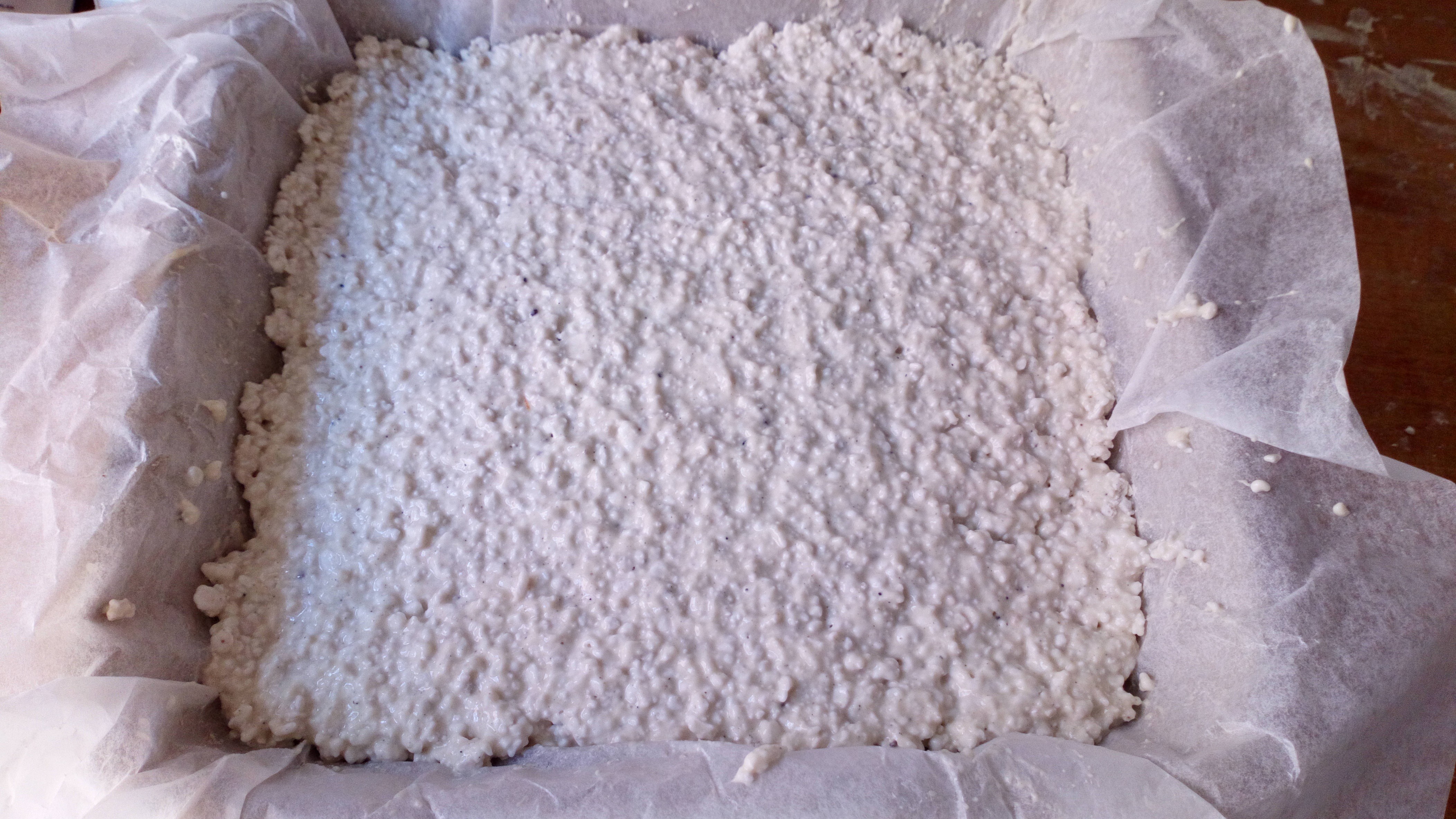
This mixture ratio holds together much better, but will take longer to dry.
I pressed some smaller tiles, crushing about twice the volume of the mould into it. This forms a much tougher end product.
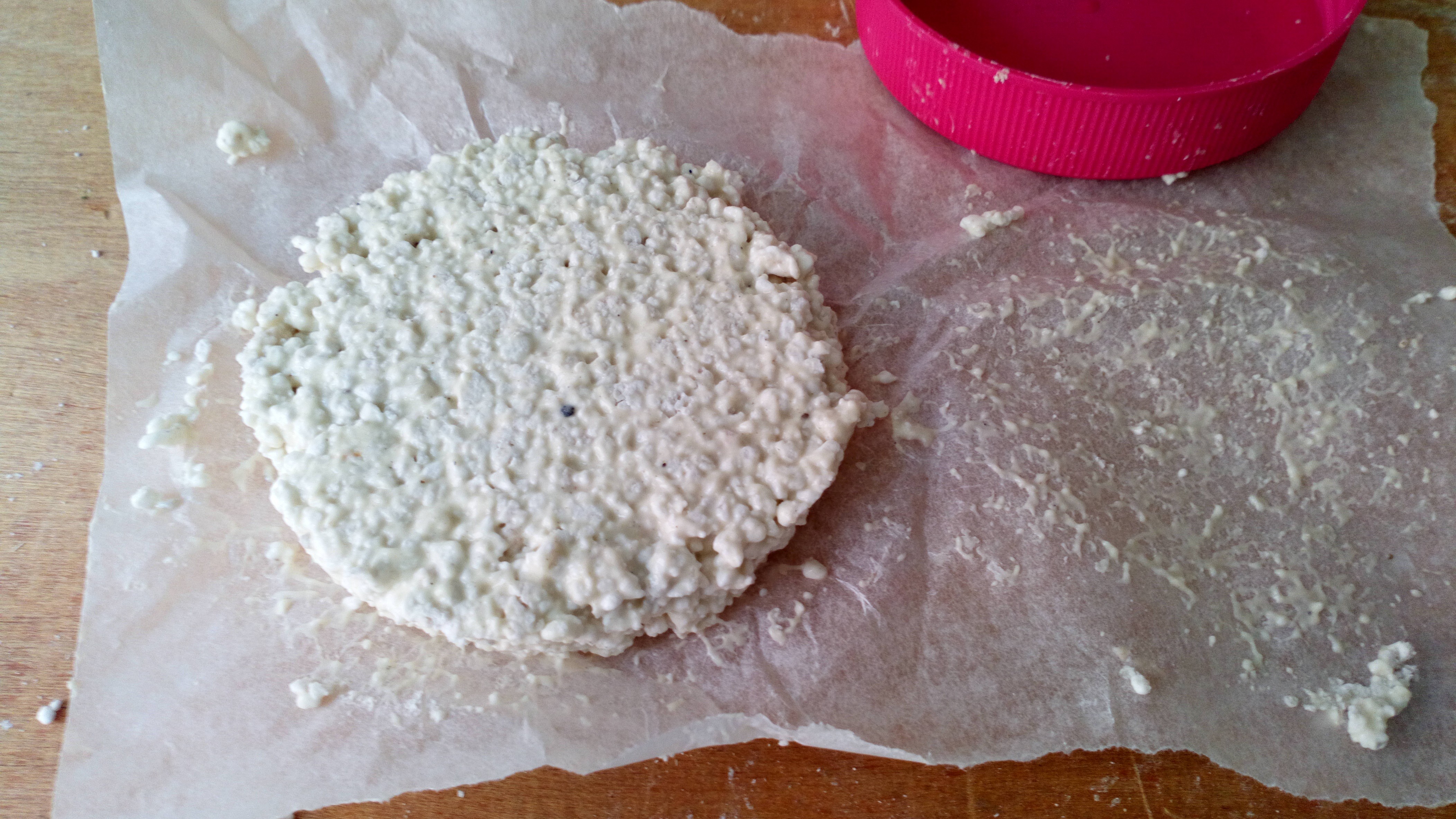
I also tried cramming a bit of poly tube full of it and rammed it down pretty good.
This makes a material that is slightly flexible. The mixture is kind-of non Newtonian, it can be bent and stretched a bit but is also slightly springy while wet. It could be trowelled onto a surface with a bit of practice.
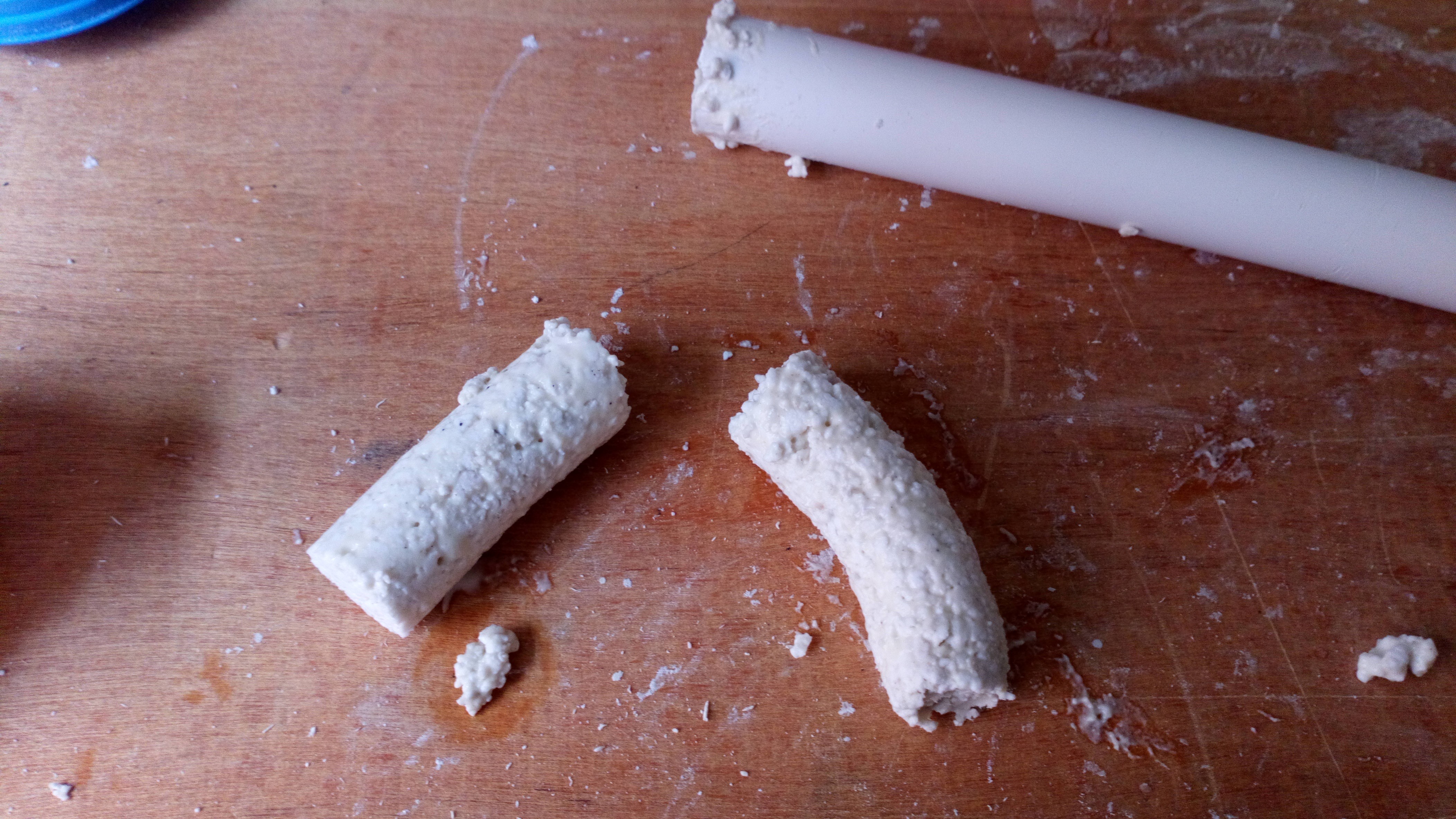
After baking the pieces were a bit of a lottery.
Gas Mark 2 for an hour was more than enough to drive the moisture out of the smaller pieces. They cooled in a matter of minutes and were handleable. Interesting...
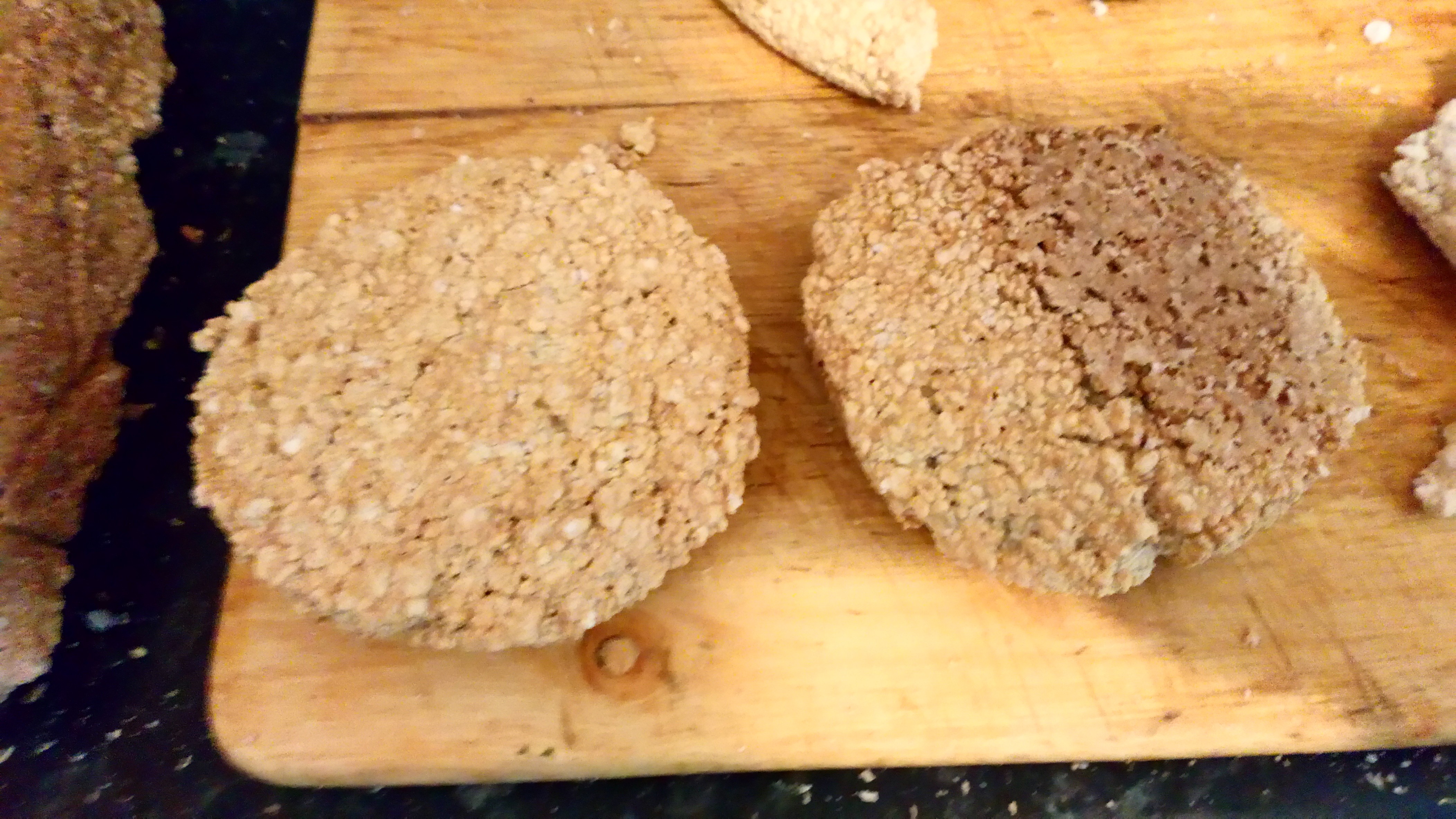
The moulded pieces remained the same shape and didnt deform at all. The surface turned kind of plasticky and its slightly rubbery inside but breaks open under pressure.
Its more like Flapjack than Cocoa Krispie, smells delicious. Probably isnt... ;-)
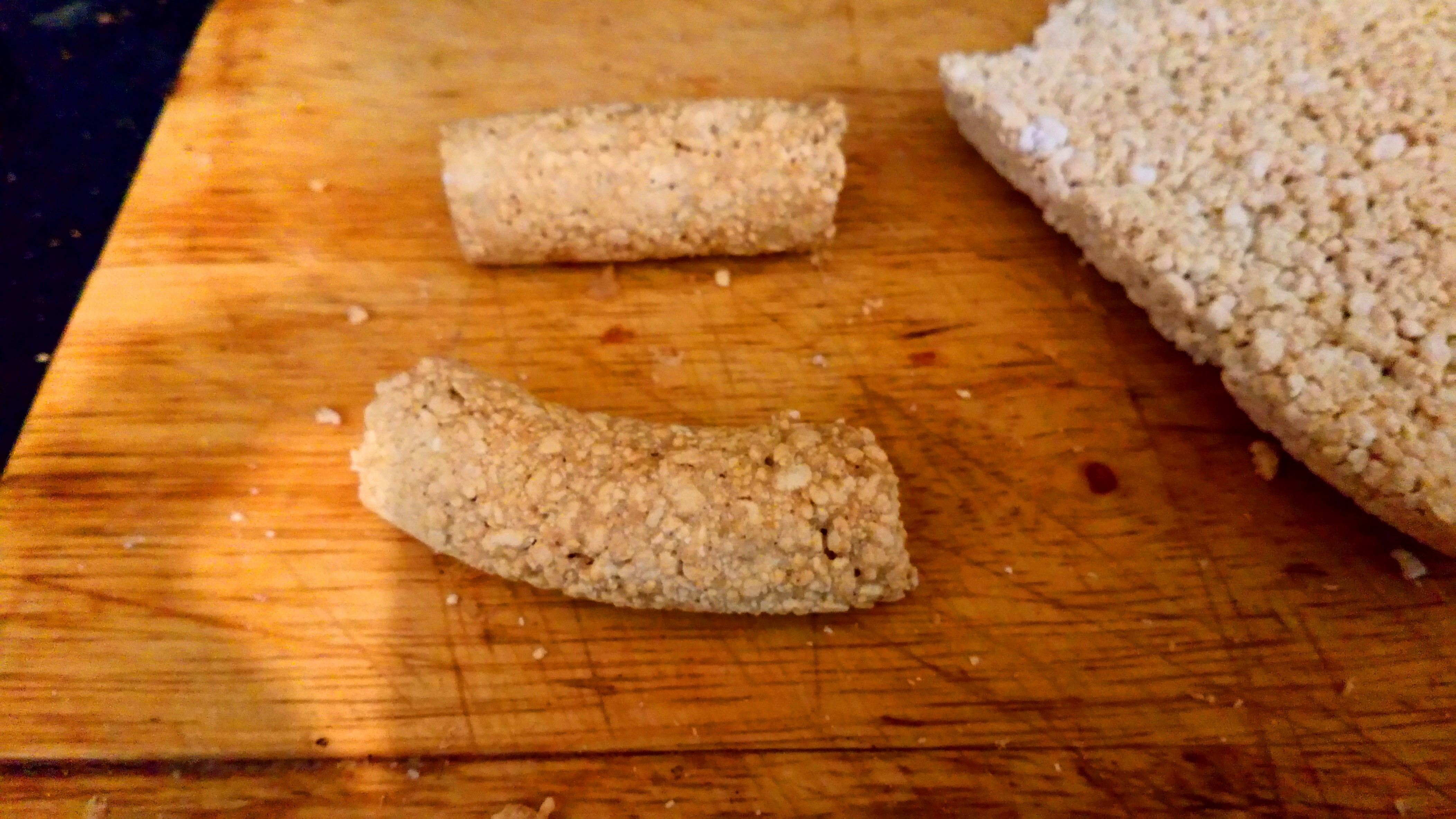
The first pieces crumbled when I tired to get them in the oven. Now they are fully dry they are a bit delicate. This ratio of mix could be poured into a cavity and packed but doesnt support any weight.
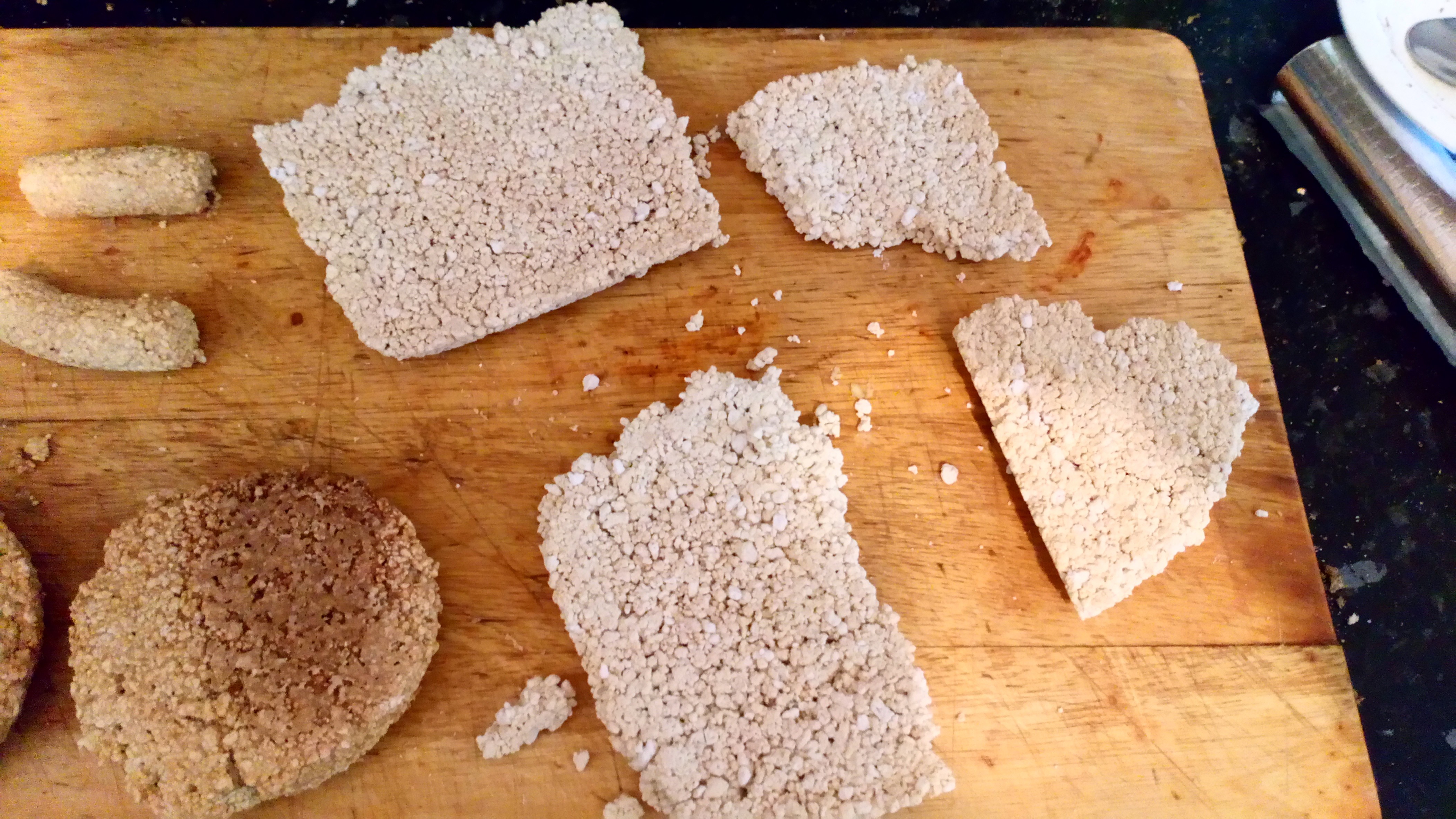
However, the test pieces behave as I had hoped.
I hit this bit with a blowtorch for over a minute, and it just looked at me, so far so good.
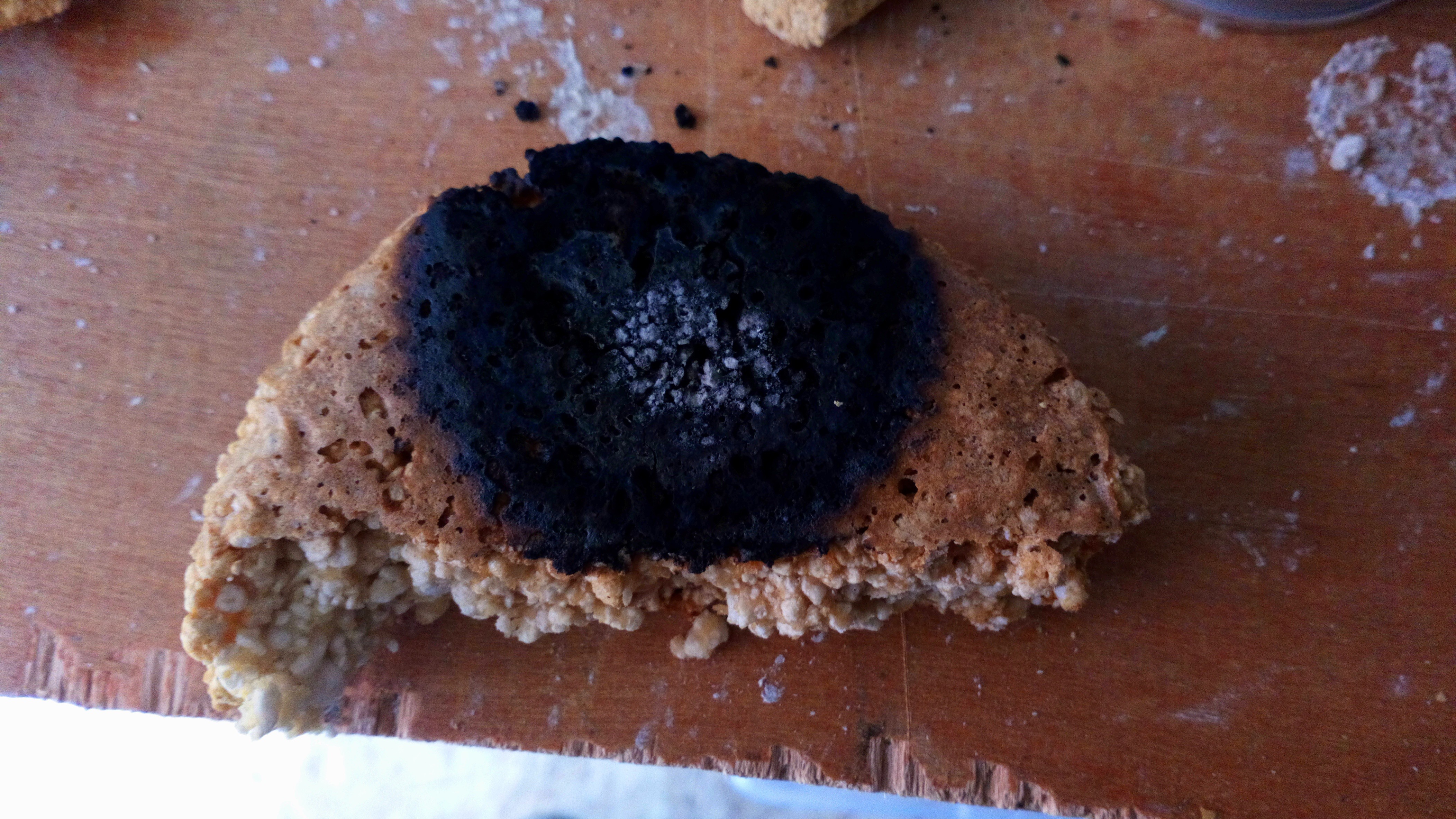
Next I turned to a fully-dried piece of compressed tile from yesterday that I left on my bench indoors.
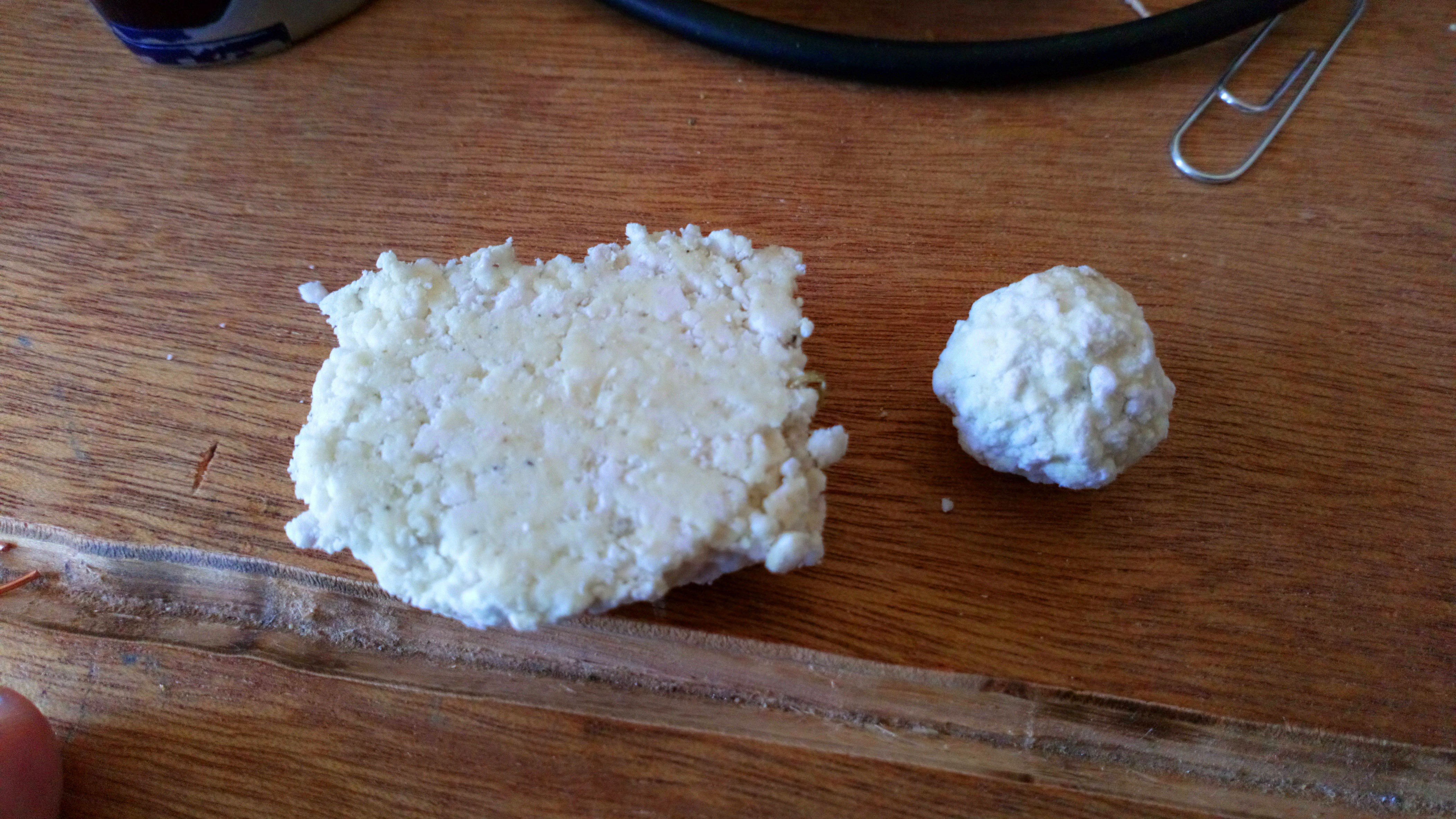
This dried out to make a chunk that feels like Papier Mashe.
However it doesnt burn. It doesnt even burn your fingers...
After the first success I tried the cooked moulding, and it doesnt affect it in the slightest.
The Perlite simply adds to the bulk and is completely inert. Being a foam it does not transmit the heat inside the Starcrete at all and improves the handling of the original material as well.
I'm very impressed with the performance. :-D
 Morning.Star
Morning.Star
Discussions
Become a Hackaday.io Member
Create an account to leave a comment. Already have an account? Log In.